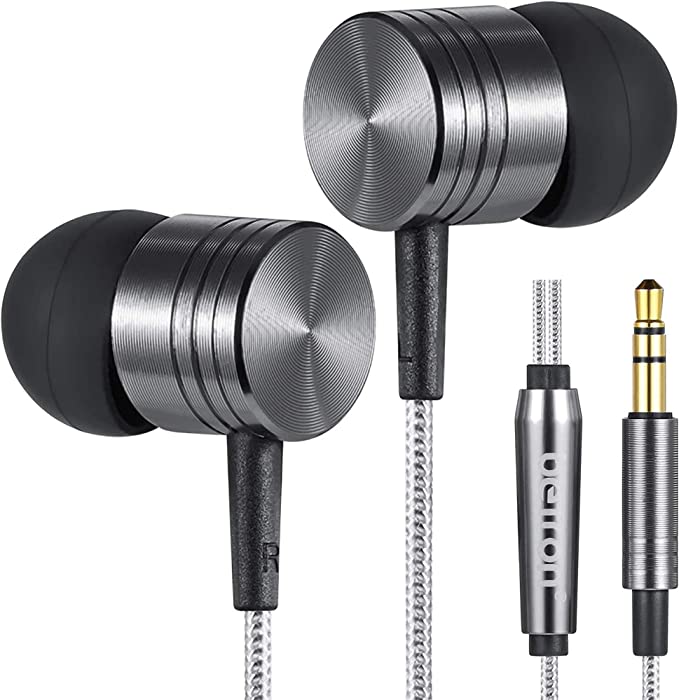AKG Pro Audio K702 Over-Ear Open-Back Flat-Wire Reference Studio Headphones - Spacious Sound for Critical Listening
Update on June 30, 2025, 5:54 a.m.
It’s a scenario familiar to anyone who has ever tried to create music: hours are spent in a state of flow, meticulously balancing the thunder of a bassline against the shimmer of a cymbal. In the headphones, the mix sounds perfect—powerful, clear, and immersive. But then comes the moment of truth, the car stereo test. Suddenly, the bass is a muddy mess, the vocals are lost, and the entire song collapses. The headphones, it turns out, were lying. They weren’t showing you the music; they were showing you a flattering, fun-house mirror version of it.
This frustrating disconnect is the very problem that reference headphones were invented to solve. They are not designed to impress, but to inform. They are the honest mirror in the world of audio, and few are as storied or as exemplary of this philosophy as the AKG Pro Audio K702. To understand this headphone is to journey into the heart of acoustic physics and uncover how meticulous engineering can create a window into the truest form of a sound.

Tearing Down the Walls
Most headphones you encounter are closed-back. They create a seal around your ears, isolating you from the outside world. While great for noisy environments, this design effectively traps sound in a tiny, sealed chamber. Like shouting in a closet, the sound waves bounce around, creating pressure, resonance, and reflections that color and distort the original signal. This is often why sound from closed headphones can feel congested and locked “inside your head.”
The AKG K702 takes a sledgehammer to these walls. Its iconic, web-like grilles on the earcups signify its open-back design. This isn’t just for aesthetics; it’s a fundamental acoustic choice. By allowing air and sound to pass freely through the earcup, it prevents the pressure buildup and internal reflections that plague closed designs. The result is a sound that breathes. This is the foundation of what audio professionals call soundstage: the perception of three-dimensional space and the placement of instruments within it.
With the K702, you don’t just hear a guitar on the left and drums on the right. You perceive the guitar as being a few feet to your left, the vocalist directly in front, and the reverb decaying into a space that seems to extend far beyond the physical confines of the headphones themselves. It’s an acoustic hologram, an illusion of a real room painted in your mind by your brain interpreting the untainted sound waves. And yes, this means sound leaks out, a necessary trade-off for a design that prioritizes a listening experience as natural and out-of-head as hearing a pair of high-end speakers in a well-treated room.

The Engine of Absolute Clarity
If the open-back design builds the virtual room, the driver technology meticulously furnishes it with detail. The almost surgical precision of the K702 stems from two core AKG innovations working in perfect harmony.
First is the flat-wire voice coil. Imagine the voice coil as the engine that drives the vibrating surface (the diaphragm) to create sound. In most headphones, this engine is wound with conventional round wire. To visualize the difference, picture stacking logs—there are always significant gaps. Now, picture stacking perfectly square bricks. This is the principle of flat-wire. It allows for a much denser winding in the magnetic gap, creating a more powerful, efficient, and rigid motor. This high-performance engine can start and stop with incredible speed, a quality known as transient response. It’s the difference between hearing a muddy “thump” from a kick drum versus the sharp, textured “thwack” of the beater hitting the drum skin. It’s the physical property that lets you hear the finest, fastest details in a recording.
This engine drives an equally intelligent surface: the patented Varimotion two-layer diaphragm. A standard, uniform diaphragm can behave like an untuned drumhead; hit it one way, and it sounds great, but hit it another, and it might wobble or produce strange overtones. A diaphragm can suffer from “breakup modes,” where parts of the surface vibrate out of sync, causing distortion. AKG’s solution is to vary the diaphragm’s thickness. The K702’s diaphragm has a thicker central zone to powerfully and accurately reproduce low-frequency bass notes, which transitions to a much thinner, more agile outer zone for reproducing delicate, high-frequency details. This design ensures that the deep rumble of a pipe organ doesn’t smear the crystalline sparkle of a triangle, allowing each frequency to be rendered with uncompromising clarity.

The Demands of a High-Performance Tool
A Formula 1 car is a pinnacle of engineering, but you can’t run it on regular gasoline or expect a comfortable ride on a bumpy road. Similarly, the K702 is a high-performance tool with specific requirements. Its impedance of 62 Ohms and moderate sensitivity mean that while a smartphone can make it produce sound, it won’t make it sing. It craves power from a dedicated headphone amplifier. An amplifier provides the electrical current and control necessary to grip the driver firmly, resulting in tighter, more defined bass and a fully realized dynamic range. It’s the high-octane fuel for this precision engine.
The design itself speaks to its purpose. The genuine-leather headband is part of a self-adjusting mechanism that forgoes manual clicking for an instant, secure fit, though its trademark bumps are a point of contention for some users—a quirk of a functional, not universally plush, design. The detachable mini-XLR cable is a professional standard, ensuring a robust connection and easy replacement, a nod to its destiny as a workhorse, not a disposable gadget.

It’s more than just a piece of hardware; it’s an instrument for listening. When you first put on a truly neutral headphone like the K702, the experience can be jarring. You hear flaws in beloved recordings you never noticed, you perceive the exact dimensions of the room a vocalist was recorded in, and you realize how much coloration and bass-boost you’ve become accustomed to. It takes time for the brain to adjust to this level of honesty.
But through that process, something remarkable happens. You’re not just hearing a song anymore. You’re hearing the engineer’s decisions, the artist’s every breath, the very space of the performance. The AKG K702 doesn’t make music sound “better.” It does something far more valuable: it reveals the music for what it truly is. And in the world of audio, that unvarnished truth is the most beautiful sound of all.



























































